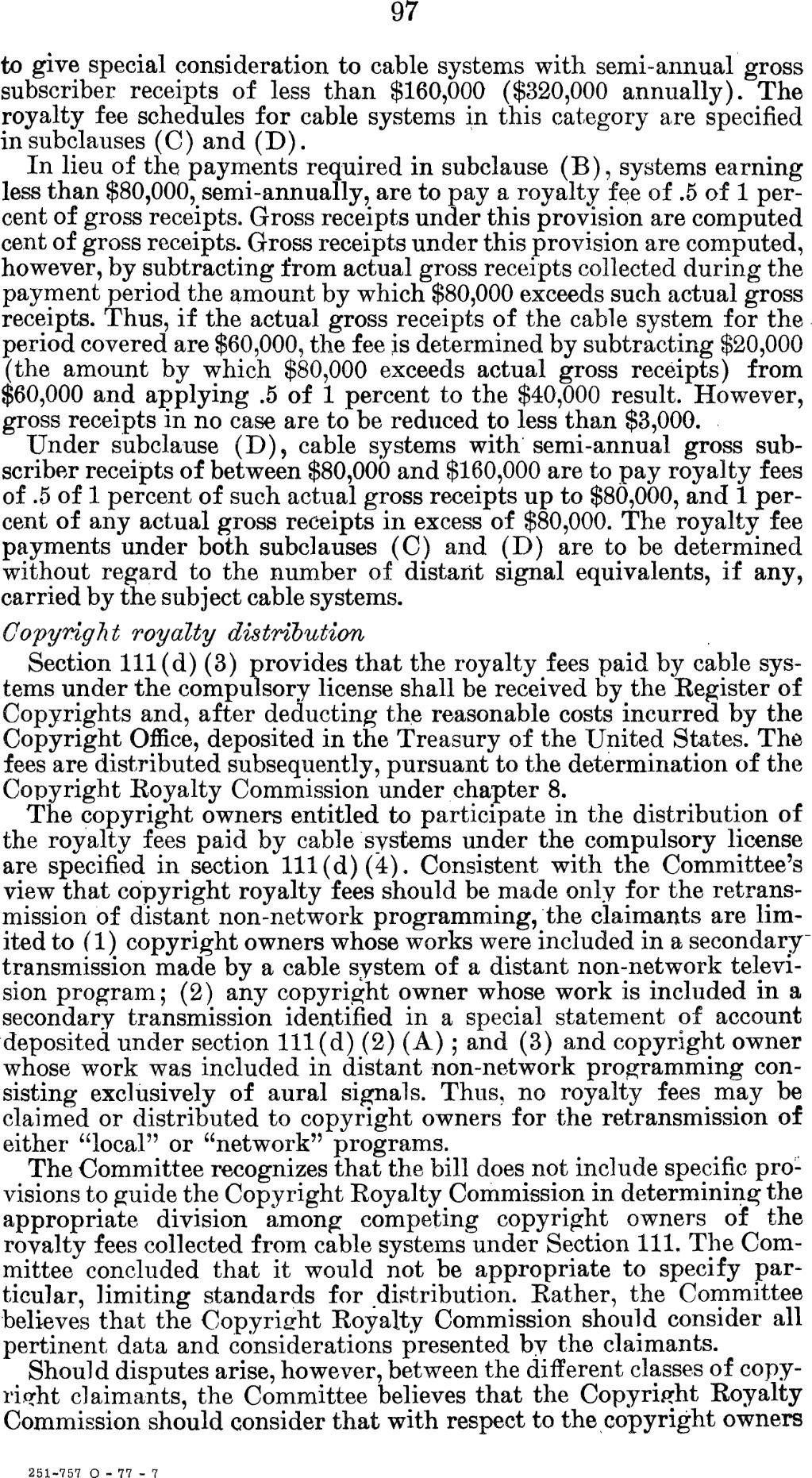97
to give special consideration to cable systems with semi-annual gross subscriber receipts of less than $160,000 ($320,000 annually). The royalty fee schedules for cable systems in this category are specified in subclauses (C) and (D).
In lieu of the payments required in subclause (B), systems earning less than $80,000, semi-annually, are to pay a royalty fee of .5 of 1 percent of gross receipts. Gross receipts under this provision are computed, however, by subtracting from actual gross receipts collected during the payment period the amount by which $80,000 exceeds such actual gross receipts. Thus, if the actual gross receipts of the cable system for the period covered are $60,000, the fee is determined by subtracting $20,000 (the amount by which $80,000 exceeds actual gross receipts) from $60,000 and applying .5 of 1 percent to the $40,000 result. However, gross receipts in no case are to be reduced to less than $3,000.
Under subclause (D), cable systems with semi-annual gross subscriber receipts of between $80,000 and $160,000 are to pay royalty fees of .5 of 1 percent of such actual gross receipts up to $80,000, and 1 percent of any actual gross receipts in excess of $80,000. The royalty fee payments under both subclauses (C) and (D) are to be determined without regard to the number of distant signal equivalents, if any, carried by the subject cable systems.
Copyright royalty distribution
Section 111(d)(3) provides that the royalty fees paid by cable systems under the compulsory license shall be received by the Register of Copyrights and, after deducting the reasonable costs incurred by the Copyright Office, deposited in the Treasury of the United States. The fees are distributed subsequently, pursuant to the determination of the Copyright Royalty Commission under chapter 8.
The copyright owners entitled to participate in the distribution of the royalty fees paid by cable systems under the compulsory license are specified in section 111(d)(4). Consistent with the Committee’s view that copyright royalty fees should be made only for the retransmission of distant non-network programming, the claimants are limited to (1) copyright owners whose works were included in a secondary transmission made by a cable system of a distant non-network television program; (2) any copyright owner whose work is included in a secondary transmission identified in a special statement of account deposited under section 111(d) (2) (A); and (3) any copyright owner whose work was included in distant non-network programming consisting exclusively of aural signals. Thus, no royalty fees may be claimed or distributed to copyright owners for the retransmission of either “local” or “network” programs.
The Committee recognizes that the bill does not include specific provisions to guide the Copyright Royalty Commission in determining the appropriate division among competing copyright owners of the royalty fees collected from cable systems under Section 111. The Committee concluded that it would not be appropriate to specify particular, limiting standards for distribution. Rather, the Committee believes that the Copyright Royalty Commission should consider all pertinent data and considerations presented by the claimants.
Should disputes arise, however, between the different classes of copyright claimants, the Committee believes that the Copyright Royalty Commission should consider that with respect to the copyright owners
